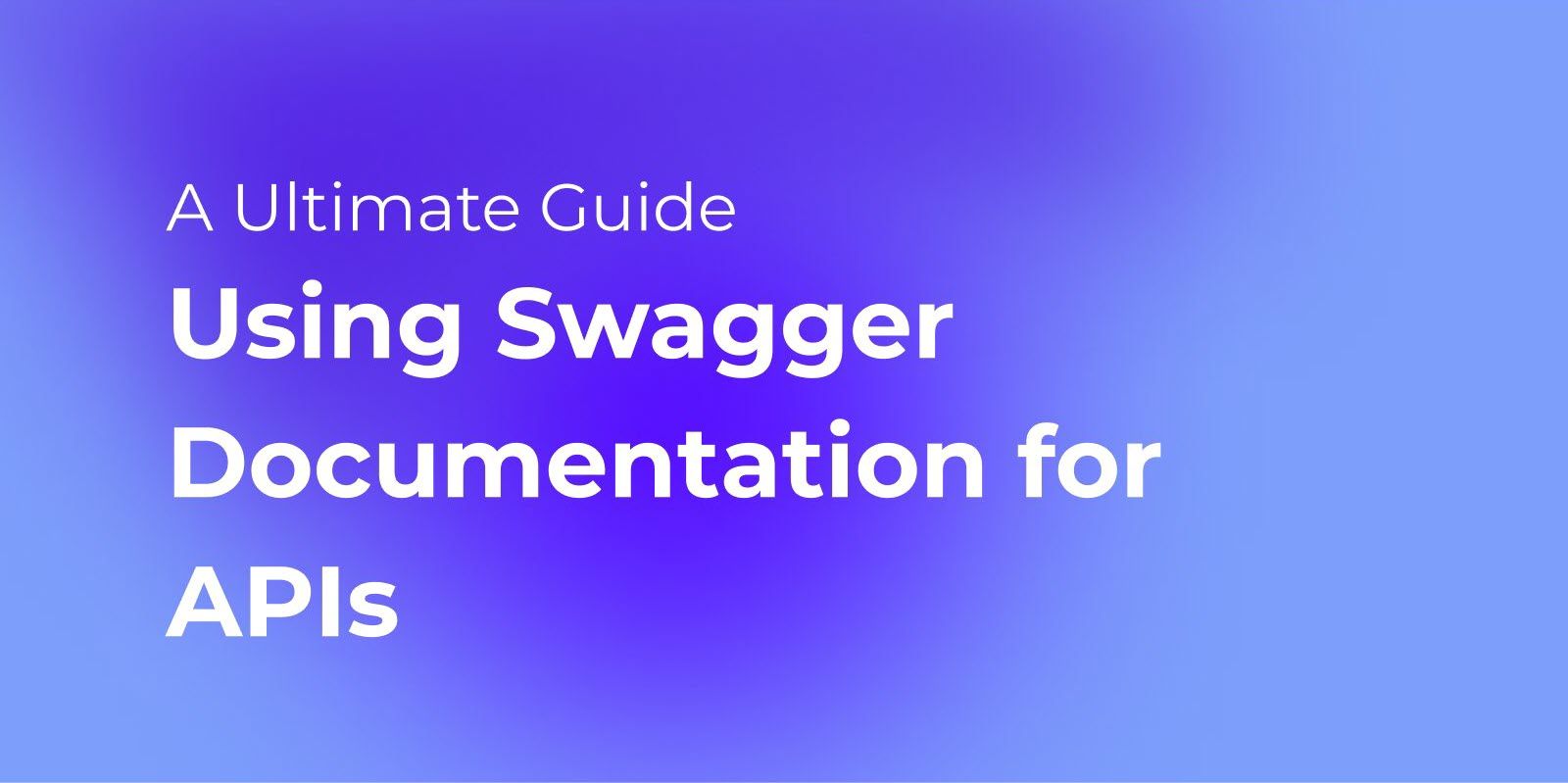In an ever-evolving digital landscape, efficient communication between various software components is crucial for businesses to stay ahead of the competition. Addressing the pain points of unclear or outdated documentation, we introduce you to two robust solutions that promise to revolutionize how you manage and maintain the crucial information that drives your software systems.
Say goodbye to the headaches of navigating complex documentation and welcome a new era of seamless integration, collaboration, and comprehension. Get ready to explore the exciting world of Swagger documentation and APIDog, two remarkable tools that will empower you to make the most of your software development journey. But first, let’s understand these documentation tools and why they are so important!
API Documentation Tool
An API documentation tool is a software application or platform that helps developers create, maintain, and publish documentation for their APIs (Application Programming Interfaces). API documentation is essential for effective communication between developers, allowing them to understand how to use and integrate with an API efficiently.
Features of API Documentation Tool
API documentation tools typically provide features such as:
- Intuitive interfaces for designing and documenting APIs
- Support for popular API specifications like OpenAPI, RAML, or API Blueprint
- Automatic generation of interactive documentation that allows developers to explore, test, and understand the API's capabilities
- Code generation for various programming languages and frameworks
- Collaboration features for team members to work together on API documentation
- Version control and change tracking for easy management of API updates
- Integration with API gateways, testing tools, and other development tools
These tools streamline the API documentation process, making it easier for developers to create accurate, up-to-date, and comprehensive documentation that fosters efficient integration and usage of APIs.
Swagger Documentation
Swagger, called the OpenAPI Specification (OAS), is a widely-adopted industry standard for API design and documentation. It empowers developers to define their APIs using a human-readable and machine-processable format, making communication, collaboration, and integration seamless and efficient. Let's dive deeper into the critical features of Swagger documentation to provide a clearer understanding of its capabilities.
API Design Using the OpenAPI Specification (OAS)

The OpenAPI Specification (OAS) provides a standardized, language-independent format for defining RESTful APIs. It enables developers to create consistent, interoperable APIs using YAML or JSON, facilitating clear communication across platforms and languages.
Interactive API Documentation
Swagger's interactive documentation lets users explore and test APIs within the document itself. This hands-on experience simplifies understanding API functionality and usage, minimizing integration errors. Swagger UI allows interaction with endpoints, parameters, payloads, and authentication without coding.
Code Generation for Various Languages and Frameworks
Swagger Codegen generates client libraries, server stubs, and API documentation in over 40 languages and frameworks. It accelerates development and ensures consistent, accurate code generation, reducing manual errors.

API Testing Capabilities
Swagger's built-in testing capabilities allow developers to validate API designs and implementations quickly. Users can send requests and view real-time responses via interactive documentation, enabling early identification and resolution of issues for a robust and reliable API.
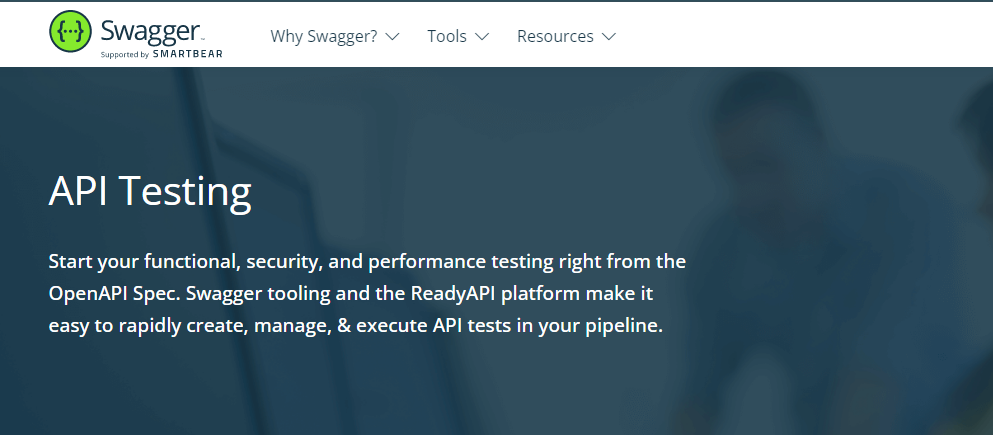
Strong Community Support and a Wide Range of Third-Party Integrations
Swagger's strong community support and extensive ecosystem of third-party integrations offer a wealth of tools and libraries for enhancing the API development process. Popular integrations include API gateways, monitoring tools, security solutions, and CI/CD pipelines. The active community keeps Swagger up-to-date and evolving to address modern API development needs.
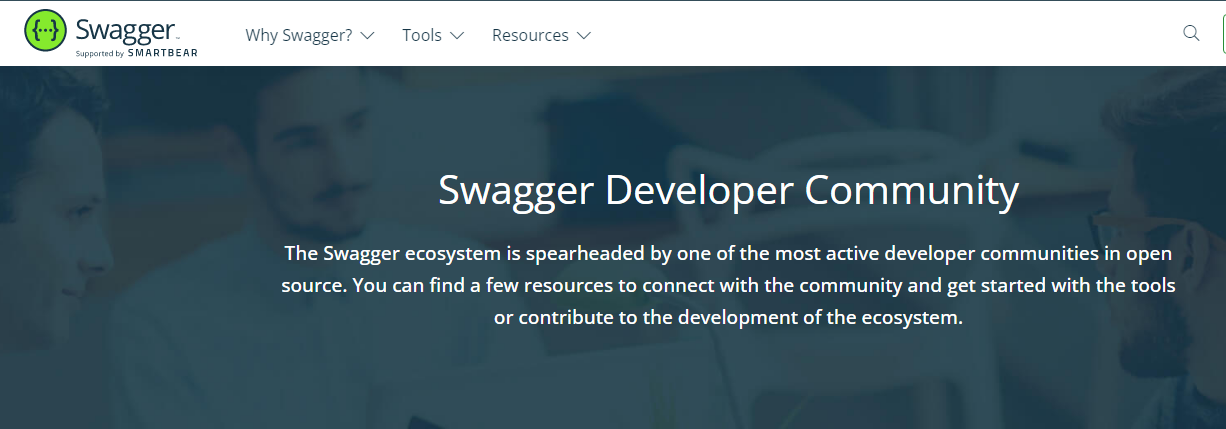
Limitations of Swagger
While Swagger documentation enjoys widespread popularity and boasts impressive capabilities, it has limitations and shortcomings. Some of the notable challenges associated with this renowned API documentation tool are stated below:
Limited Integrations in SwaggerHub
While SwaggerHub offers a range of API design, documentation, and testing features, it must improve integration with other tools and systems that developers frequently use. Although it provides API integration and some connectors, the platform needs comprehensive compatibility with a broader array of development tools, making it more challenging to streamline workflows and improve overall efficiency.

Learning Curve
Developers new to Swagger and the OpenAPI Specification may face a steeper learning curve in understanding how to use the tools effectively. Since Swagger documentation is heavily based on the OAS, developers must familiarise themselves with the specification language, making it potentially more challenging for those with prior experience.
Customization Limitations
While Swagger UI is somewhat customizable, it might only meet some organizations' specific branding and style requirements. Some users may find that the default UI does not suit their needs or preferences, and customizing the interface might require additional work and knowledge of web development technologies.
Verbose Specification
The OpenAPI Specification can be lengthy and complex, making creating and maintaining documentation manually challenging. It can lead to difficulties in understanding the underlying API structure, especially for less experienced developers. It may also increase the likelihood of errors and inconsistencies in the documentation, which can negatively impact the API's usability and maintainability.
Limited Review Process
The review process in SwaggerHub needs improvement, as it needs a comprehensive request review mechanism and help with comment management. It currently needs a comprehensive request review mechanism, making it difficult for teams to collaborate effectively on API documentation.
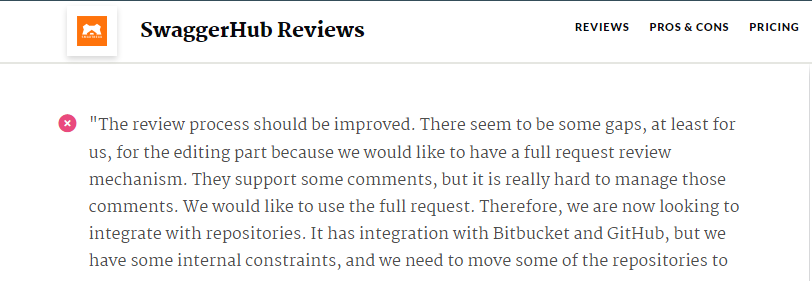
Cost Considerations
While SwaggerHub offers a free plan, its more advanced features are available only on paid plans, which may be a barrier for some users, particularly startups and smaller organizations with limited budgets. Additionally, as a project's complexity and team size grows, users may need to upgrade to more expensive plans to continue benefiting from the advanced features that facilitate efficient API development and documentation.

In summary, Swagger is a powerful tool for API design and documentation that offers numerous benefits, but it also has some drawbacks, particularly concerning collaboration features and the learning curve. Users should carefully evaluate their needs and requirements to determine if Swagger is the best choice for their API development projects.
Apidog Documentation
Apidog is an all-in-one API development platform that streamlines the process of designing, testing, and deploying APIs. Its user-friendly interface and robust features make it an ideal choice for developers, QA engineers, and front-end developers seeking a comprehensive API documentation solution. Let's look at the critical features of Apidog documentation to provide a more detailed and educational understanding of its capabilities.
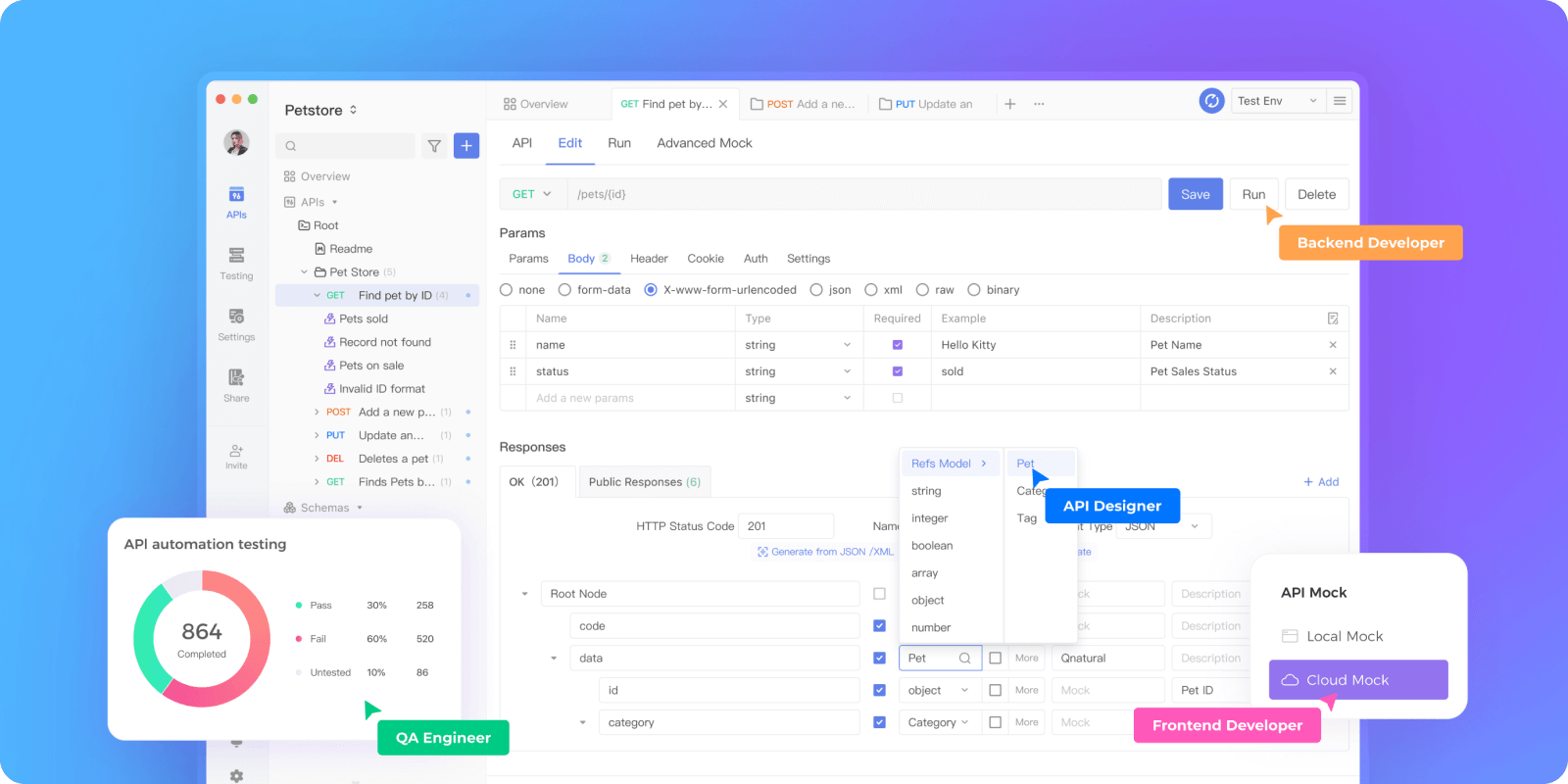
Intuitive API Documentation and Design
Apidog offers an intuitive and visually appealing interface for designing and documenting APIs. Developers can quickly create and manage API endpoints, request parameters, headers, and response structures. The platform also supports importing and exporting API definitions in popular formats such as OpenAPI and Postman, promoting interoperability and collaboration.
Variables and Environment Management
Apidog provides robust variable and environment management features, allowing developers to store and reuse values across different requests. Users can define environment-specific variables, which are accessible only when a particular environment is selected, and global variables, which are accessible across all environments. This flexibility lets developers easily switch between development, staging, and production environments.
Pre and Post-Processors
With built-in pre and post-processors, Apidog allows developers to manipulate requests and environment variables before sending a request and validate responses after receiving them. These processors support JavaScript and the Postman SDK, enabling developers to add custom logic, set or modify variables, perform data validation or transformation, and more.
API Mocking
Apidog's powerful API mocking feature lets developers simulate API responses for testing and development purposes. Based on the specified API, Apidog can automatically generate mock data without configuration, making it incredibly convenient for front-end developers. Moreover, Apidog supports the integration of Faker.js for generating dynamic mock data and customizing intelligent mock matching rules.
Automated Testing
Apidog's automated testing module enables QA engineers to directly generate test scenarios from API definitions or API cases. The platform supports data-driven testing, making it easy to generate dynamic test data. Visual assertion and variable extraction features simplify the process of writing test cases, while the built-in CI/CD support ensures seamless integration with modern development workflows.
Database Operations
Apidog supports various database operations, such as executing SQL statements and extracting SELECT results to variables. The platform is compatible with popular databases like MySQL, SQL Server, Oracle, and PostgreSQL, enabling developers to perform operations directly from the platform.
Data-Driven Testing
Apidog's data-driven testing capabilities allow users to define test cases using a set of input values and expected output values. This approach enables comprehensive testing of API endpoints with various data sets, helping developers identify edge cases and potential issues more effectively.
Advanced Apidog Documentation Features:
API documentation plays a vital role in the development process, and having access to advanced features can significantly improve the overall experience for both developers and teams. Apidog offers an array of advanced API documentation features that simplify your workflow and enable better collaboration and customization options. These sophisticated features allow you to control your API documentation fully, making it more accessible and visually appealing.
Seamless Sharing of Online Documents
Apidog simplifies sharing online documents for your API projects, promoting better collaboration and communication among team members. With this feature, you can create an online document for your project, customize its settings based on your needs, and share it with your colleagues in no time. Additionally, Apidog supports real-time synchronization, running and debugging, and modifying environment variables, ensuring a smoother and more efficient documentation experience.
Tailor Your Page Layout to Perfection
Apidog offers various layout customization options, allowing you to create an online document interface that suits your preferences. You can add navigation functions, document bottom banners, login and registration buttons, and more. With four modules available - Top Navigation, Left Side Catalog Style, Top Bulletin, and Content Footer - you can easily customize your document to fit your team's needs. Apidog plans to support more components, further enhancing the customization possibilities.
Simplify Custom Domain Setup with Apidog
If you want to set up a custom domain for your API documentation, Apidog provides two convenient methods to achieve this. You can use a web server like Nginx for simple configuration or leverage full-site acceleration services (DCDN) from cloud providers such as AWS CloudFront and Cloudflare. Both methods allow you to use your server relay function and ensure smooth access to your project documentation under your custom domain.
Apidog Documentation offers a user-friendly, feature-rich solution for designing, documenting, and testing APIs. Its intuitive interface makes it an invaluable tool for developers seeking an efficient and comprehensive API development platform.
Comparing Apidog and Swagger: Which One Is Better?
Apidog and Swagger both offer potent features for API development and documentation. However, they cater to different requirements and use cases. In this comparison, we will outline the strengths of each tool and suggest scenarios where one might be a better fit than the other.
Apidog - Best suited for:
- Teams are looking for an all-in-one API development platform with a user-friendly interface.
- Projects that require a comprehensive set of built-in features and capabilities without relying on external tools or integrations.
- Organizations that prioritize collaboration and streamlined workflows.
Swagger - Best suited for:
- Projects that require adherence to the OpenAPI Specification for consistency and interoperability with other tools and platforms.
- Teams need a powerful interactive documentation system for improved communication and understanding.
- Organizations that value customization and a wide range of third-party integrations.
conclusion
Selecting between Apidog and Swagger ultimately comes down to your team's specific needs and objectives. If you're searching for an intuitive, all-in-one API development platform that emphasizes collaboration and includes a wide range of built-in features, Apidog is a perfect choice. Swagger might be better for projects demanding interactive documentation and extensive customization via third-party integrations.
However, if you want to explore a user-friendly and collaborative API documentation solution, we recommend trying Apidog. Start your journey with Apidog and experience how it can revolutionize your API development process. Discover the benefits of Apidog today!
